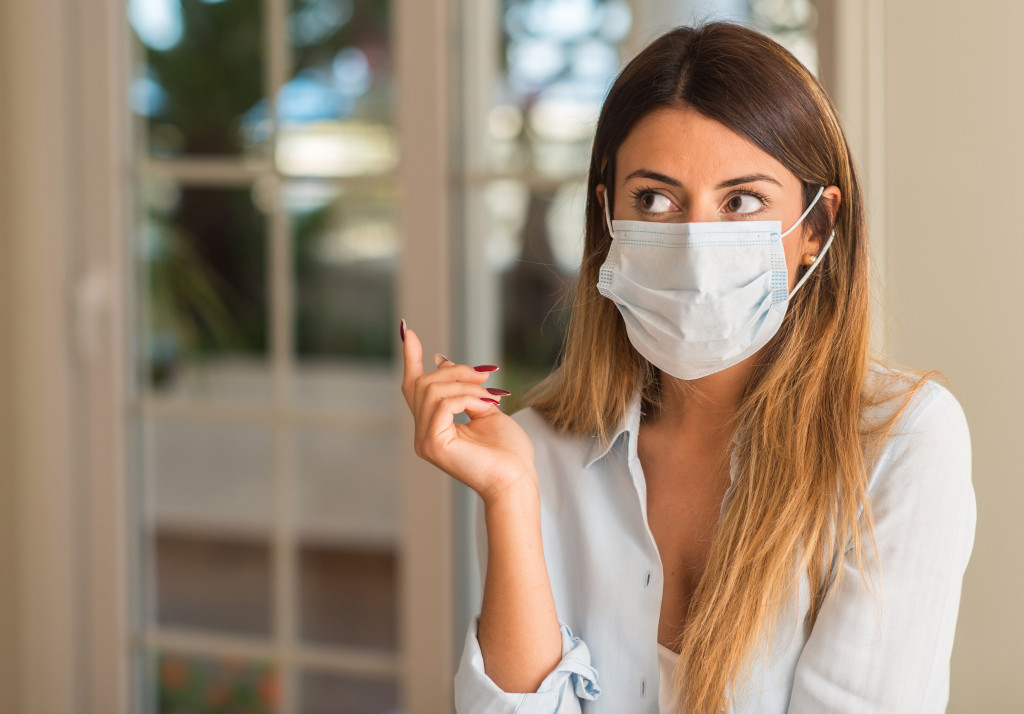- Indoor air pollution can be more polluted than outdoor air.
- Common sources of indoor air pollution include poor ventilation and cooking with gas stoves.
- Investing in a residential RO water purifier can help keep your drinking water safe and clean.
- Lead poisoning is most common in young children, who may be exposed to lead dust from deteriorating paint or contaminated soil.
- Read labels and instructions carefully when using household chemicals, and keep them out of reach of children.
Your home is supposed to be your haven, where you can relax, unwind and spend quality time with your family. But did you know that several health hazards are lurking in your home that can impact your physical well-being?
From mild irritants to life-threatening dangers, these hazards pose a risk to everyone in your home. Here are the most common health hazards found in homes and offer tips on eliminating or reducing their impact.
Indoor air pollution
Most people think of the smog and pollution-filled air found in big cities. However, were you aware that the air quality inside your home could be equally hazardous and contaminated as the outdoor air? Indoor air pollution is a real problem that affects millions of people worldwide.
Familiar Sources of Indoor Air Pollution
Many sources of indoor air pollution can cause poor air quality in your home. Some of the most common sources of indoor air pollution include inadequate ventilation, cooking with gas stoves, smoking, using candles and incense, using cleaning products with harsh chemicals, and using air fresheners.
How to Improve the Air Quality in Your Home
Improving the air quality in your home is essential to protect your health and well-being. Here are some simple steps you can take to improve the air quality in your home:
- Let fresh air into your home by opening windows and using exhaust fans
- Keep your home clean and free of dust and debris
- Use natural cleaning products without harsh chemicals
- Avoid smoking or smoking in your home
- Use a vacuum cleaner with a HEPA filter to trap dust and allergens
- Replace air filters in your heating and cooling system regularly
Water contamination

Water contamination is a problem that hits close to home, literally. Even in developed countries, it’s not uncommon for home water supplies to be contaminated with everything from bacteria to chemicals and heavy metals.
Thankfully, there is a solution that can help keep your drinking water safe and clean: investing in a residential RO water purifier. RO refers to “reverse osmosis,” a process that filters out water impurities.
Unlike other filtration methods, RO systems effectively remove impurities from your water supply. This means you can drink and cook confidently, knowing your water is free from harmful contaminants.
Lead
Lead is a toxic metal that can cause serious health problems when ingested or inhaled. Unfortunately, many homes still contain lead-based paint or other materials that could be hazardous to health. Lead poisoning is most common in young children, who may be exposed to lead dust from deteriorating paint or contaminated soil.
Identifying Potential Hazards
If your home was built before 1978, there is a chance that it may contain lead-based paint. You can test for lead yourself using test kits available at hardware stores or hire a professional to conduct a more thorough inspection. Other potential lead sources in the home include old plumbing systems, leaded glass, and contaminated soil.
Managing Lead Hazards
If you discover lead in your home, there are things you can do to reduce the risk of exposure. Taking proper precautions when renovating old houses, such as wetting surfaces, covering floors, and wearing adequate clothing, including dust masks, may reduce lead complications. Replace any old, lead-based plumbing systems with new, lead-free ones. Also, mop and vacuum floors frequently, especially if young children or pregnant women are in the home.
Carbon Monoxide
Carbon Monoxide is a colorless, odorless gas that can be lethal if not detected. It is typically produced by gas-fired appliances such as furnaces, stoves, and water heaters. Installing carbon monoxide alarms and regularly servicing your appliances can help prevent carbon monoxide poisoning.
Household chemicals

Many everyday household chemicals can be harmful if not used properly. Cleaning products, pesticides, and even certain personal care products can all contain chemicals that can harm your health. It is essential to read labels and instructions carefully and keep these products out of reach of children.
Final Thoughts
As you can see, there are many potential hazards in your home that can be harmful to your health. It’s essential to be aware of them and take action to reduce their impact. If you have concerns about the air quality in your home, get it tested. If you live in an older home, get it tested for lead. Install carbon monoxide alarms and practice proper storage and use of household chemicals. By taking these steps, you can help create a safe and healthy home for you and your family.

